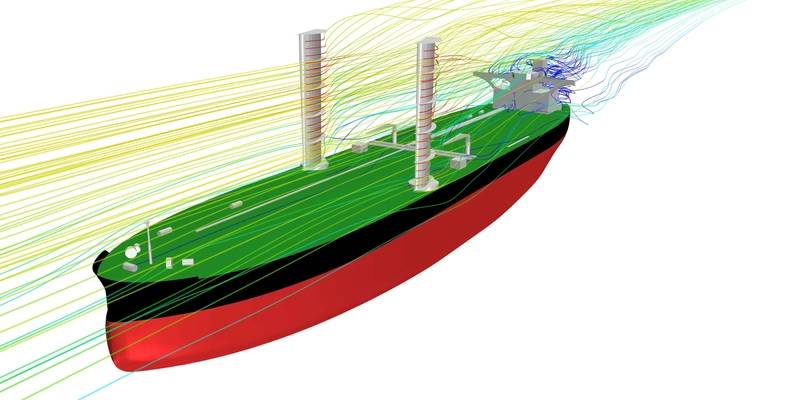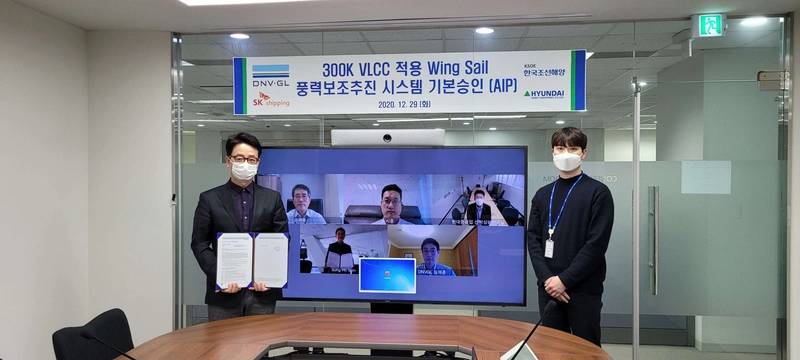DNV GL Awards AIP to KSOE for Wing Sail Propulsion
Classification society DNV GL said it has granted Approval in Principle (AIP) to Korea Shipbuilding and Offshore Engineering (KSOE) for a new wing-sail auxiliary propulsion system for ships designed to help reduce shipping emissions and fuel burn.
The wind-powered auxiliary propulsion system, designed for installation aboard many vessel types, is the result of a joint research project from KSOE, the shipbuilding holding company of Hyundai Heavy Industries Group, and SK Shipping, to develop wind-powered eco-friendly propulsion solutions.

"We are speeding up efforts to bring eco-friendly technologies to the market, said KSOE's Head of the Future Ship Research Department, Hyunjoon Shin, who claims the new wing sail system will reduce fuel consumption by more than 6%.
The wing sail design is 20 meters wide, 50 meters high and installed vertically on both sides of the deck. It rotates its wings according to the direction and intensity of the wind to provide auxiliary propulsion to the ship. The wing can be lowered to 10 meters in height, making it flexible in case of bad weather or when passing under a bridge.
"This is a promising technology that shows new possibilities for shipowners to be able to meet IMO standards for reducing carbon emissions," added Haeyong Son, Vice President of SK Shipping.
DNV GL said it undertook the AIP by reviewing the initial drawings related to design loads, system responses, redundancies and components submitted by KSOE, while SK Shipping provided insights on the technology from an owner’s point of view.
"Wind propulsion for ships is an effective solution which helps meeting IMO regulations for greener shipping," said Vidar Dolonen, DNV GL Regional Manager Korea & Japan, adding, "DNV GL is ready to deliver a wide range of related services for further projects."
The AIP is also a big step toward awarding a ship DNV GL’s new additional class notation, WAPS (Wind Assisted Propulsion System). In addition, DNV GL has recently developed a standard for the certification of wind assisted propulsion systems in response to enquiries for the independent assessment of those systems.

